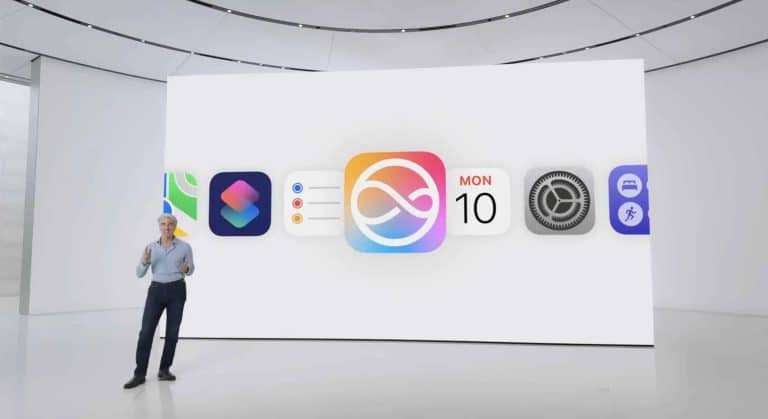Analyzing Apple's LLM Siri Development

Table of Contents
Siri's Current LLM Capabilities and Limitations
While Apple has integrated aspects of LLM technology into Siri, significant room for improvement remains. Let's examine both the advancements and the shortcomings.
Natural Language Understanding (NLU) Improvements
Siri has shown improvements in its NLU, though it still lags behind competitors in certain areas.
- Improved context awareness: Siri now better understands the context of a conversation, allowing for more natural and fluid interactions.
- Enhanced speech recognition accuracy: Significant advancements have been made in accurately transcribing speech, even in noisy environments.
- Better handling of complex queries: Siri can now handle more complex and multi-part questions more effectively than in previous iterations.
- Still lags behind competitors in nuanced understanding: Siri occasionally struggles with subtle nuances in language, sarcasm, or complex emotional contexts, unlike more advanced LLMs.
For example, while Siri can now understand follow-up questions related to a previous query, its comprehension of colloquialisms and idioms still requires improvement compared to Google Assistant's capabilities. It may correctly interpret "What's the weather like today?", but struggle with a more nuanced request like, "Is it going to be a scorcher today?"
Limitations in Generative Capabilities
Siri's generative capabilities, crucial for a truly advanced LLM, remain a significant area of weakness.
- Limited ability to generate creative text formats: Unlike advanced LLMs that can generate poems, code, scripts, or creative stories, Siri's creative writing abilities are extremely limited.
- Lack of robust conversational memory: Siri struggles to remember details from previous turns in a conversation, leading to repetitive questioning and a less natural interaction.
- Struggles with complex or open-ended questions: Siri often provides generic or unsatisfying responses to complex or open-ended questions that require deep reasoning or creative problem-solving.
- Less sophisticated responses compared to advanced LLMs: Siri's responses are often less detailed, insightful, and engaging than those produced by leading LLMs like GPT-4.
The difference is clear when comparing Siri's factual responses to the more creative and nuanced answers provided by other LLMs. Asking a complex hypothetical question highlights this disparity.
Integration with Apple Ecosystem
Siri's strong integration within the Apple ecosystem is both a strength and a limitation.
- Seamless integration with other Apple devices and services: Siri works seamlessly across iPhones, iPads, Macs, Apple Watches, and HomePods, offering a unified user experience.
- Strong reliance on Apple's walled garden: This tight integration limits interoperability with devices and services outside the Apple ecosystem.
- Limited third-party app integration compared to open platforms: Compared to Google Assistant or Alexa, Siri offers fewer integrations with third-party apps, restricting its functionality.
The advantages of a cohesive ecosystem are clear, but the lack of broader integration hinders its potential reach and functionality compared to more open platforms.
Challenges Facing Apple in LLM Siri Development
Apple faces numerous hurdles in its pursuit of a superior LLM-powered Siri.
Data Privacy Concerns
Balancing user privacy with the vast datasets needed for training advanced LLMs presents a critical challenge.
- Balancing user privacy with the need for vast datasets to train LLMs: Training LLMs requires enormous amounts of data, raising concerns about user privacy and data security.
- Concerns about data collection and usage: Users are rightly concerned about how their data is collected, used, and protected.
- Compliance with data privacy regulations (GDPR, CCPA): Apple must navigate complex data privacy regulations, limiting the data it can utilize for training.
Apple's commitment to privacy is a strength, but it also necessitates innovative approaches to training LLMs without compromising user data.
Competition from Open-Source LLMs
The rise of open-source LLMs presents a significant challenge to Apple's proprietary approach.
- Rise of open-source LLMs: Open-source projects are rapidly advancing LLM technology, offering potentially faster innovation.
- Potential for faster innovation and wider adoption: Open-source models encourage collaboration and rapid development, potentially surpassing closed-source alternatives.
- Challenges in maintaining a competitive edge: Apple needs to innovate aggressively to stay ahead of the rapid advancements in the open-source LLM landscape.
The open-source community’s rapid pace of development necessitates a dynamic response from Apple.
Balancing Performance with Power Consumption
Optimizing LLMs for mobile devices requires significant advancements in efficiency.
- LLMs are computationally intensive: Running sophisticated LLMs requires significant processing power.
- Need for efficient algorithms and hardware optimization for seamless mobile experience: Apple must develop highly efficient algorithms and optimize its hardware for seamless performance on mobile devices.
- Impact on battery life: Powerful LLMs can significantly impact battery life, requiring careful optimization.
Balancing performance and power consumption is critical for a smooth user experience on mobile devices. Apple's A-series chips offer a potential advantage.
The Future of Apple's LLM Siri Development
The future of Siri holds immense potential, contingent on overcoming the current challenges.
Potential Advancements
Future iterations of Siri could significantly enhance its functionality.
- Improved context understanding: Even more sophisticated understanding of conversational context, allowing for more natural and intuitive interactions.
- More sophisticated generative capabilities: The ability to generate various creative text formats, code, and even potentially more complex responses.
- Enhanced multi-modal interaction (text, image, voice): Integrating visual and other sensory inputs for richer, more nuanced interactions.
- Deeper integration with AR/VR technologies: Seamless integration with augmented and virtual reality to create immersive and interactive experiences.
These advancements could transform Siri into a truly powerful and versatile intelligent assistant.
Strategic Partnerships and Acquisitions
Strategic alliances and acquisitions could accelerate Apple's progress.
- Potential collaborations with leading AI research institutions: Partnerships with top AI research organizations could foster innovation and access cutting-edge technology.
- Acquisition of smaller AI startups: Acquiring promising AI startups could provide Apple with valuable talent and technology.
- Licensing of advanced LLM technologies: Licensing existing advanced LLM technologies could be a faster path to deploying improved capabilities.
Strategic moves are crucial for maintaining competitiveness in this rapidly evolving field.
Impact on the Apple Ecosystem
An enhanced Siri would have a profound impact on the entire Apple ecosystem.
- Transformation of user experience: A more intelligent and capable Siri would dramatically improve the user experience across all Apple devices.
- Enhancement of productivity and accessibility: Siri could become a more powerful tool for productivity and accessibility for users with disabilities.
- New opportunities for app developers: A more powerful Siri would open up new opportunities for app developers to integrate its capabilities into their applications.
The improvements would extend far beyond Siri itself, benefiting the whole Apple ecosystem.
Conclusion
Apple's LLM Siri development is a continuous journey. While Siri currently lags in certain aspects compared to rivals, Apple's strengths in hardware, software integration, and dedication to user privacy offer a strong foundation for the future. By successfully addressing the challenges related to data privacy, competition, and power consumption, and by investing strategically in R&D, Apple can significantly enhance Siri's capabilities. Continue following the developments in Apple's LLM Siri development to stay updated on the future of this iconic voice assistant.

Featured Posts
-
 Understanding Cassis Blackcurrant History Cultivation And Health Benefits
May 21, 2025
Understanding Cassis Blackcurrant History Cultivation And Health Benefits
May 21, 2025 -
 The Goldbergs Exploring The Characters And Their Relationships
May 21, 2025
The Goldbergs Exploring The Characters And Their Relationships
May 21, 2025 -
 Liverpools Resurgence The Klopp Years
May 21, 2025
Liverpools Resurgence The Klopp Years
May 21, 2025 -
 Tvs Antiques Roadshow How An Appraisal Led To A Criminal Conviction
May 21, 2025
Tvs Antiques Roadshow How An Appraisal Led To A Criminal Conviction
May 21, 2025 -
 Urgent Search Child Missing After Train Hits Family Killing Two
May 21, 2025
Urgent Search Child Missing After Train Hits Family Killing Two
May 21, 2025
Latest Posts
-
 Benjamin Kaellman Kasvua Ja Maaleja Huuhkajien Riveissae
May 21, 2025
Benjamin Kaellman Kasvua Ja Maaleja Huuhkajien Riveissae
May 21, 2025 -
 Kaellmanin Ja Hoskosen Puola Ura Paeaettymaessae
May 21, 2025
Kaellmanin Ja Hoskosen Puola Ura Paeaettymaessae
May 21, 2025 -
 Huuhkajat Kaksikko Kaellman Ja Hoskonen Laehtevaet Puolasta
May 21, 2025
Huuhkajat Kaksikko Kaellman Ja Hoskonen Laehtevaet Puolasta
May 21, 2025 -
 Kaellman Ja Hoskonen Loppu Puolan Seuralle
May 21, 2025
Kaellman Ja Hoskonen Loppu Puolan Seuralle
May 21, 2025 -
 Benjamin Kaellman Maalivire Huuhkajien Apuna
May 21, 2025
Benjamin Kaellman Maalivire Huuhkajien Apuna
May 21, 2025
